I think that the problem is not in green energy or "standard" energy sources but in our way of thinking. When I was on university on micro and nanotechnology specialisation we learned a lot about new materials specialy based on carbon: nanotubes, graphen etc. If people would like to, we could develop and build more optimal energy infrastructure with less losses, key is in new wire and battery technology. I think that lot of companies didn't want to develop new technology in batteries because it could make waste for their current factories (they should build new ones) and building new energy infrastructure would cost a lot. With old infrastructures and energy storage technologies we couldn't build "green" energy sources e.g. solar sources in places where it could give most optimal effect. I think that we should still use gas sources, and we should develop more optimal ways of using it e.g. for our cars. There are a lot of food industry waste (also in our homes) from which we could make gas for energy use. In the future when we could develop methods to destroy harmful radioactive waste (I readed somewhere that even now there could be biological organisms that eat this waste) or find new better energy sources we could make our vehicels on air in the place of vehicles on gas (in fact, now there are companies that produce cars on compressed air, it's not optimal because of a lot of energy waste to generate those air but if we could in the future make it more optimal in energy produce and compressed air produce then, we could have car's that didn't waste any of "materials" in our word). Even now every one of us which live in the place where temperatures are higher than 21 C could buy his own little biogas factory from waste (or build one):
In my opinion, in time of two generations we could build a society where energy and food are almost for free (there always would be cost of repair of new infrastructure) but it would be needed for people to cooperate with each other and know what to do in right way. Instead of this we have now not optimal technology with good advertisment to buy it and waste our money and health with people who didn't know things about those technologies.
You are using an out of date browser. It may not display this or other websites correctly.
You should upgrade or use an alternative browser.
You should upgrade or use an alternative browser.
Wind Energy - "green energy" scam?
- Thread starter luc
- Start date
Also, note that "self-generation" by large industries is not included in these charts. I don't know the numbers, but I bet that there are many large industries who use their own power generation systems, not least because of the insane cost of energy in Germany... thanks to renewables.
Have never looked into this deeply and yet in many places in Canada there are large industries, in some sectors, that do indeed use hog-fuel to generate 24/7 boiler power, and some over-generate, which is feedback into the grid for customer use. Other industries are directly feed off of hydro systems (locating relatively adjacent), or they have their own hydro systems from established water use permits. Natural gas boiler generating systems, also. Solar and wind is akin to
 dixie - yet the sky is the limit for investing, building and replacing viable traditional fuel systems.
dixie - yet the sky is the limit for investing, building and replacing viable traditional fuel systems.There is also a trend to send wood waste pellets to some Scandinavian countries from Canada (EU also), and have read about chain of custody processes for wood fiber i.e. by certification groups (this was after 'negotiating' a zero C02 assigned footprint, based on fuzzy agreed upon accounting, that is). However, the end use of these fuels may not be just for home heating, it may also facilitate industrial boiler power generation in Scandinavia = a long way to ship BTU fuels.
As you pointed out by the graphs, green sales pitches are vigorously massaged, illustrated, publicized and then sold to the public in staggering volumes - and their numbers never work out, other than the taxpayer grants to producers (never converted into the cost of the actual power produced) that takes it all live. Even with Bio-fuels, the spin is to replace coal and oil with something green and new, but it is not new based on the old hog boilers that exist, and if there is self-generated hog-fuel availability, then that power is cheap.
Notice in the most recent rollout by our provincial hyper-socialist/green 'Honorable' premiere, Horgan, for the proposed climb out from under this Covid-darwinian mess they helped create, provides a central control message of their Green Agenda that will remain front and center for the 'back to work' recovery. It was nice song and dance.
In the film, was sorry to see RFKjr. schilling for green-eng knowing what he does with helping people wade through the toxin issues of vaccine/pharma control. However, the history of 'green' in terms of people like ex Greenpeace Patrick Moore, may hold some movement for RFKjr. and others who are now backpedaling away from the 'Gore' conception of green.
In the 'special thanks' section of the film (and have not looked at all), noted that Robert Fripp is given mention - he was also recently brought up in the MindMatters interview with Joseph Azize regarding Gurdjieff, and noticed also Carl Palmer was alongside Fripp, of Emerson, Lake and Palmer fame (if the same Palmer).
It's heartbreaking. As someone who is affected by this, I couldn't bring myself to watch it till the end. The amount of evilness and corruption that needs to be present in a society for something so destructive to be thrown at good, normal people just makes me dizzy.
Had watched this again (yes it was hard), and realize so many of you are likely directly affected, as said yourself, luc, while having them in or near the back yard. Very sad...
And what is interesting is that not only that you have these big drops in production, but you will also have a big spikes in consumption, once the Germans start to massively buy electric cars. CHAdeMO 3.0 will support up to 500 kilowatts. CCS 2.0 supports up to 350 kilowatts. Tesla V3 superchargers support up to 250 kilowatts. That's gonna be a huge fluctuation between production and consumption.
Was reading some conversion data from the Climate Conversation Group (NZ) in an article by Dr Michael Kelly. It has mathematical/energy use calculations, so posting it here in full.
Note: Although Kelly is a "Trustee of the Global Warming Policy Foundation," he is offering up a bit of an electric reality warning if interested in reading:
The NZ ambition to replace internal-combustion engines with electric cars
https://www.realclearenergy.org/art...ersus_internal_combustion_engines_486956.htmlMay 8, 2020 12:16 am \ 16 Comments \ by Michael Kelly

Ever wondered what’s inside the famous Tesla battery? More batteries. Thousands.
— by Dr Michael Kelly,
University of Cambridge, UK.
May, 2020.
Next time you stand for 90 seconds filling your petrol tank, you might think of the enormous energy flow. Chemical energy is entering your tank at typically 17 million joules per second, or a gigantic 17 megawatts.
That’s equivalent to the energy given off by 17,000 one-bar electric heaters (imagine 6 tennis courts covered in them) or 24 hours of average power consumption (24 kWh) for 700 New Zealand households. A full tank (about 1,500 megawatts) would run those 700 houses for three full months.
Optimistic champions of green obsession
It’s a lot of energy and causes many difficulties that are glossed over by optimistic champions of the green obsession with all-electric cars.
In making personal mobility all-electric, two important considerations must be weighed. The first is that electric motors convert electricity to motion three times more efficiently, in energy terms, than the internal-combustion engine does with petrol. The second is that we do not recharge an electric battery in 90 seconds. The numbers are slightly different for diesel vehicles, but the main conclusions are the same as for petrol.
When electronics first became portable in the early 1970s, the battery was a carbon-zinc type. All the global research in the fifty years since then has produced a lithium-ion battery, which has six times the density of energy storage; but the energy stored in petrol is still more than forty times denser than this.
For direct comparability in performance, the car battery has to be forty times bigger in volume than the petrol tank. A Tesla car weighs 2.2 tonnes and its battery 540kg and occupies 400 litres: for a high range of 600km, you would need 48 litres of petrol weighing 36kg.
Benmore could charge all our cars every 35 days
Consider Benmore Power Station, the second biggest in New Zealand, with a maximum generation capability of 540 megawatts. At full power, it could refill the batteries of 32 cars if they were to be charged in 90 seconds. Now that electric engines are three times as efficient at using electrical energy compared with cars using petrol, the energy from Benmore could actually charge 96 (say 100) electric cars in 90 seconds. Suppose instead we charge them over a period of 90 minutes, i.e., sixty times slower, which is more realistic but still very fast, we could then charge 6000 cars at once, or about 100,000 in a day. There are about 3.5 million cars and light vans in New Zealand, so Benmore could recharge the NZ light fleet every 35 days!
New Zealand uses ~37% of all its energy[1] on the transport sector, and the current total electricity capacity provides New Zealand with ~24% of its energy requirement[2]. If that transport energy was electricity rather than fossil fuels, the energy figure is divided by three to account for the extra efficiency of electric motors. For New Zealand to transition to an all-electric fleet for transport, we would have to use 50% of the existing electricity grid for transport, or enhance the existing generating capacity by 50% to cope with transport on top of every other demand.
We need 50% more power and grid capacity must more than double
Little of this extra electricity will be generated by hydropower as there is much resistance to more damming of New Zealand rivers. Any wind and solar used for transport will have to be produced and stored so that vehicles can be recharged on demand. I will say something more on large-scale batteries below. If there is an additional requirement to electrify heating and cooling of buildings the present grid would have to double in capability to handle both heat and transport. It is worse than that, as heat demand peaks in winter requiring as much as 6-8 times the dedicated electricity as used for cooling in summer.
In addition to extra generation and transmission capabilities of the grid, all the distribution from local substations will have to be upgraded. A typical NZ house uses about 24 kWh of electricity per day, averaged over the year, for an average usage of 1 kW peaking at 3-5kW at times of high demand. A typical electric battery charger draws 7 kW for slow charging over 12 hours or 15 kW for faster charging over 6 hours. So each household’s usage would surge by 7 or 15 times the long-term average when charging a car, up to 30 or 45 times normal for two or three cars.
This represents a significant fluctuation in electricity use. The local substations are guaranteed to fail at some point under this level of demand. Unless individuals are told when and where they can recharge their car batteries, there will be regular brownouts. In the UK if a supermarket wants to install say 4-6 charging points it must contribute NZ$0.5M to upgrade the local substation. The electrification of domestic heating would add further to this burden on the local grid.
The Elon Musk backup battery wouldn’t last a day
The further nail in the coffin of an all-electric transport system in New Zealand is the use of battery technology to handle intermittent renewable energy storage at the scale needed for cities. This is most easily seen with reference to the battery that Elon Musk installed outside Adelaide two years ago, at a cost of NZ$100M. Its capacity is encapsulated by two numbers, the energy stored, i.e., 130 MWh, and the maximum rate at which electricity can be drawn, i.e., 100 MW. In practice one does not fully discharge, or indeed fully charge a battery, and typical usage involves an 80% to 20% discharge of stored electricity.
To compare this, consider the energy back-up provided by gas and diesel generators for (say) Wellington Hospital: if its peak electrical demand is of order 5 MW (private communication), the Musk battery would last for about 16 hours at full power on that 80% to 20% discharge. After that we would need a new charged battery on the back of a dozen articulated lorries.
The diesel and gas generation would continue so long as there is fuel: the generators together would cost of order NZ$0.8M. One needs back-up of order a week to cover a modern equivalent of the 1998 blackouts in Auckland. The cost and performance differentials are very high (125:1 and 7-10:1 respectively), and will not be bridged by 2050 on current progress, let alone 2025 when Extinction Rebellion insist all will be in place. These differentials apply across the whole economy.
In the short term, doomed to failure
There is another battery issue regarding electric vehicle concerns. If we replace just the whole UK traffic fleet of today with electric vehicles (assuming they use the most resource-frugal next-generation batteries), it would make the following materials demands[3]:
The New Zealand requirements would be about a tenth of this. Indeed, it is estimated that the current electric vehicle battery manufacturing capacity would have to increase by 700-fold for all the world to be transported in electric vehicles, with vast increases in the supply of materials described above: way beyond known reserves. If there are shortages of batteries, cars will be idled and internal combustion engines taken out of mothballs on a large scale.
- 207,900 tonnes of cobalt – just under twice annual world production.
- 264,600 tonnes of lithium carbonate (LCE) – three quarters of world production.
- at least 7,200 tonnes of neodymium and dysprosium – nearly the entire world production of neodymium.
- 2,362,500 tonnes of copper – more than half the world production in 2018.
Put simply: the infrastructural engineering capability required to provide for electric cars and electric heating by 2050 is a massive and probably unachievable ambition. To attempt to accelerate it, to 2025, is madness. The rest of the world can look at New Zealand and choose whether to laugh or weep. One thing it shouldn’t do is emulate NZ. Elsewhere I have done the equivalent analysis for the UK[4].
Enthusiasts talk about their individual electric car, but never consider what infrastructure is needed when everyone else’s car is also electric.
Dr Michael Kelly is Emeritus Prince Philip Professor of Technology in the Department of Engineering at Cambridge University, Fellow of the Royal Society, former chief scientific advisor to the Department for Communities and Local Government, and Trustee of the Global Warming Policy Foundation.
[1] New Zealand's Consumption
[2] From Wikipedia sites, New Zealanders use about 8 MWh of energy per person per year, and the total electricity generated per year is 40,000 GWh, hence the figure just quoted.
[3] We need more scarce metals and elements reach the UK's greenhouse gas goals
[4] Electric Motors Versus Internal Combustion Engines
Yeah, and even if we exclude all the problems with the energy production and storage, the extreme vulnerability to fluctuations in production/consumption is a very strong weak point in our electric grid. My country just started using the Microsoft's AI to solve this big problem:
But the combination of electric cars and wind/solar energy is gonna create a chaos. AI can help but it cannot solve this fundamental problem.
The error margin that hovered between 5 percent to 15 percent shrunk to 1.7 percent. “Reduced error deviation means reduced costs to cover it. We save up to EUR600,000 per year for the balancing market alone,” explains Komatina. “As we also trade better; we predict we’ll be making another EUR300,000 of profits per year,” adds Vlaisavljević. “We don’t have to start and stop our generators as often, so there are fewer malfunctions, reducing repair costs and downtime periods. Ultimately, we now produce more electricity, sell more, and buy less,” summarizes Komatina.

Serbian energy provider boosts trading profits with predictive AI
Accurate energy demand evaluation is vital for Serbia’s leading utility supplier, Elektroprivreda Srbije (EPS). Wanting to improve and optimize the process of consumption forecasting, the company‘s stakeholders resolved to use a new solution combining Microsoft Azure Machine Learning with Power...customers.microsoft.com
But the combination of electric cars and wind/solar energy is gonna create a chaos. AI can help but it cannot solve this fundamental problem.
Germany orders all fuel stations to provide electric charging points
Germany is not just boosting subsidies to improve public interest in electric vehicles, it’s also pushing infrastructure improvements too.
Last night, Reuters reports that the German government has asked all petrol and diesel filling stations to also offer electric vehicle charging. The move comes as part of the country’s €130 billion ($146 billion) economics recovery plan.
According to BDEW, Germany’s association for the energy and water industry, the country had more than 27,700 EV charging points as of March.
However, for electric vehicles to be a viable option in the European nation, Germany needs to install at least 70,000 regular charging stations and over 7,000 fast-charging points.
As of 2018, there were less than 21,000 filling stations in the country. With that in mind, Germany won’t be able to rely on converting petrol stations to meet the demands of EV charging. The Reuters report doesn’t mention how many charging points each station will need to offer, but it’s clear Germany needs to build many more dedicated locations too.
Just yesterday, the German government announced that it was doubling its battery EV buyer subsidy from €3,000 ($3,360) to €6,000 ($6,700). Including manufacturer subsidies, new EV buyers can now receive up to €9,000 ($10,000) in financial support toward their car purchase.
With initiatives like these, Germany is becoming increasingly supportive of ultra low emission vehicles.

Germany orders all fuel stations to provide electric charging points
Germany is not just boosting subsidies to improve public interest in electric vehicles, it's also pushing infrastructure improvements too.thenextweb.com
Germany orders all fuel stations to provide electric charging points
Well with fuel vapour hugging the ground as it does and not readily dispersing into the air, having electric points near forecourts will prove very interesting. I wouldn't want to work anywhere near there.
Well with fuel vapour hugging the ground as it does and not readily dispersing into the air, having electric points near forecourts will prove very interesting. I wouldn't want to work anywhere near there.
Persej said:
Just yesterday, the German government announced that it was doubling its battery EV buyer subsidy from €3,000 ($3,360) to €6,000 ($6,700). Including manufacturer subsidies, new EV buyers can now receive up to €9,000 ($10,000) in financial support toward their car purchase.
Green buyers can now feel really good, another taxpayer subsidy that helps them directly with a spinoff for the mining interests in the Congo, too (not to mention the folks at Korea's LG Chem et cetera and others named in this lawsuit). Wonderful.
 Thus, it's going to get even more busy in the Congo's mining sector.
Thus, it's going to get even more busy in the Congo's mining sector.After reading for a few hours over on the BLM thread, apparently in the Congo many black kids lives really don't seem to matter. However, don't tell these top ten green companies and the NGO's behind them.
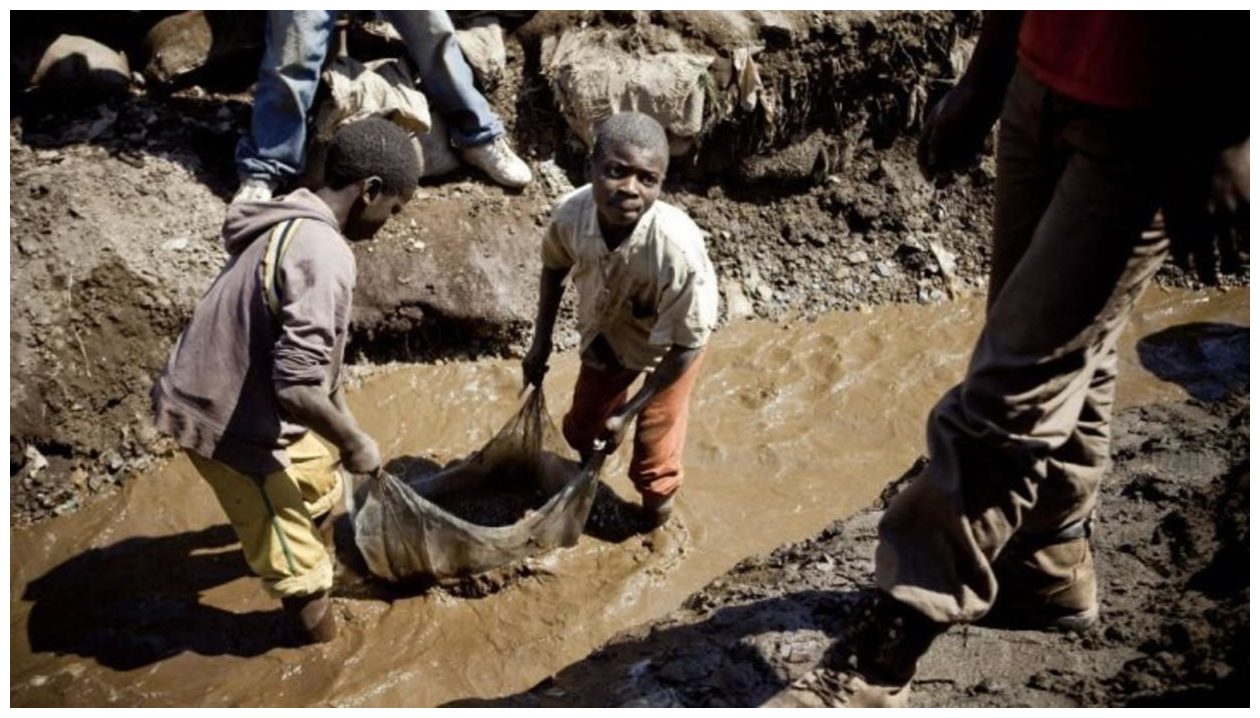
Dirty little secret behind EVs
Behind the 'clean' wheel of the electric cars, there is a dark secret. The main element used to produce the batteries that power electric cars is cobalt - a toxic and hazardous element. Cobalt mining, which is a dangerous task, takes place in the...
snip said:Behind the 'clean' wheel of the electric cars, there is a dark secret. The main element used to produce the batteries that power electric cars is cobalt - a toxic and hazardous element. Cobalt mining, which is a dangerous task, takes place in the Democratic Republic of Congo (DRC) which is home to 70% of the world's cobalt supply. The mining of cobalt is unregulated and involves child labour, exploitation, human rights abuses and environmental risks to those who work on the mines.
[...]
Child labour is also prevalent with 28% of the workforce, or 19,000-30,000 miners are under the age of 15. A majority of the children are often exploited orphans or street children. Children work approximately 12 hours in the mines for the opportunity to earn money and afford school fees.
Furthermore, the living conditions are dreadful. Cobalt particles in the soil make it dangerous for vegetables and consumption of these cause vomiting, diarrhoea, and fatal lung diseases including pneumonia. Diseases are rampant in the miners' camps due to lack of sanitation and hygiene.
Women are subject to sexual harassment, abuse and rape and some are forced into prostitution. Girls, as young as ten, are subject to sexual attacks and many become pregnant. According to the United Nations, approximately 80 children die every year in the cobalt mines, although more deaths go unreported with bodies buried in the rubble of collapsed tunnels. Reading this makes us question whether the exploitation and inhumane treatment of children and adults is necessary for 15kg of cobalt to make one single electric car?
From within an above post, Dr. Michael Kelly reminds:
A Tesla car weighs 2.2 tonnes and its battery 540kg and occupies 400 litres: for a high range of 600km, you would need 48 litres of petrol weighing 36kg.
{and to replace gas powered vehicles with one battery weighing between 14 kg to 22 kg, spiraling Cobalt requirements will exponentially grow to meet the these new needs (to start) with:}
207,900 tonnes of cobalt – just under twice annual world production
{I'm guessing this number is off for some reason, and then factor in solar energy battery requirements, to name another need}
Go Green, they say, save the planet...
The following talk/presentation was on Watts Up With That? with a focus on the German energy 'soft' power schemes featured in this thread above; not just Germany.
The presentation is by Dr. Lars Schernikau, who also sits on the C02 Coalition Bord with other notables, such as Dr. Patrick Moore et cetera.
Nothing revolutionary to readers here, although Lars notes conditions, such as geographical wind charts against the misleading energy output/costs of the greeny-global-power dictates.
In brief:
"Wind & Solar account for 2% of primary energy
Their costs will always increase the more we use them"
Climate, Coal, and Covid
The presentation is by Dr. Lars Schernikau, who also sits on the C02 Coalition Bord with other notables, such as Dr. Patrick Moore et cetera.
Nothing revolutionary to readers here, although Lars notes conditions, such as geographical wind charts against the misleading energy output/costs of the greeny-global-power dictates.
In brief:
- Discusses 'Integration Costs' (cost of backup, grid costs, balancing costs)
- 'Energy Cost' (i.e. a windmill cost is a 10 yr development cost return), recycling costs (very expensive)
- Green 'Mineral Cost' is exponential over others (have a look at the metrics) - mining et al.
"Wind & Solar account for 2% of primary energy
Their costs will always increase the more we use them"
Well that´s sinister looking.... When we drive on the highway, I always have a feeling that those wings will cut trough the car....For those who are unaware of the scope of this - look at these pictures from Germany. And know that Germany is the role model for the world when it comes to the Green Utopia - so watch out, soon to come to your place:
They shape was always interesting to me and puzzled me; when you remember those old mills that power by air, they are not shaped like this.
They have wider wings, to catch the air.
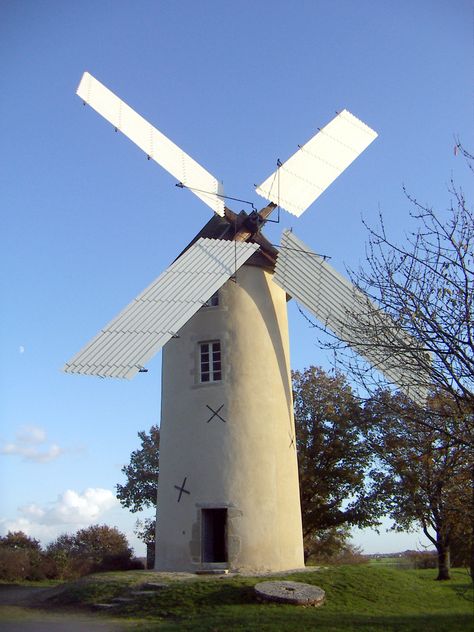

I´m no scientist in air dynamics but this thin and heavy wings on modern wind turbines look wrong to me.
This modern wind turbines actually remind me of Mercedes Benz logo.
... Over time, the color of the Three-Pointed Star changed from gold to white to silver, but it always carried one meaning: the dominance of Daimler engines on land, sea, and in the air.
Some compare Mercedes Benz logo to Triquetra (or Trinity knot) (see here here and here).

An ancient Celtic symbol, the triquetra is considered one of the oldest; dating back to as early as 500 BC when it was used to symbolize the triple goddess (maiden-mother-crone). Over the centuries it has become the symbol for the Holy Trinity among Christians in Ireland. The symbol is often used to represent the 3 fundamental elements – air, water, and earth or the infinite cycle of life.
Apparently there is also distorted/occult meaning to Triquetra; that this symbol represents three inter-woven "6"s or - interlocked "666".
So reading this thread, about no use of this wind turbines in green energy whatsoever and that they actually damage our body, one can only conclude that their entire point is to stamp the land with occult markings, lower the energy vibration and to make us sick.
I dunno....
Plugsurfing increases charging prices: up to 1.09 euros per kWh
German customers pay an average of around 30 cents per kilowatt hour for household electricity. We knew that charging an electric car at the public pillar can be significantly more expensive. But that a kilowatt hour there can cost over one euro, we were a bit amazed.
After all, a small electric car like the Opel e-Corsa needs around 16 kWh / 100 km. So here would be more than 16 euros for 100 kilometers, while a diesel Corsa (4.0 liters / 100 km) costs less than five euros per 100 km.
But back to the occasion for the whole thing: The charging service company (new German Mobility Service Provider or MSP) Plugsurfing will increase its prices on January 15, 2021: In future you will pay 49 cents at charging stations with alternating current (AC), and at fast charging stations with direct current (DC) 69 cents. But now it comes: At the particularly fast Ionity charging stations with up to 350 kW charging power, 1.09 euros per kWh will be due in future.
Billing directly via Ionity is much cheaper. The Charge Point Operator (CPO) "already" offers the kWh for 79 cents. The procedure is apparently simple: you scan the QR code of the charging station with your mobile phone, enter the payment data in the web form that appears and authorize the payment.
So far, Plugsurfing charged 44 cents on the AC column, 54 cents on the DC column and 84 cents on the Ionity column. Plugsurfing justifies the sharp price increase with the 19 percent increase in VAT and an adjustment to the costs.
The advantages of plugsurfing include the dense network of charging stations (allegedly the densest network in Europe) and convenient payment processing. You need a charging key (a kind of token, for a one-time fee of 9.95 euros, see picture above) or a normal charging card from Plugsurfing and the free Plugsurfing app.
You enter your payment details into the app (credit card or PayPal). After you have linked the charging key to your mobile phone via RFID, you can simply hold the charging key up to the column and use the stations of many CPOs. At the end of the month you only get one invoice (from Plugsurfing) - instead of one from every charging network provider.
The "Plugsurfing Plus" tariff was previously an alternative to individual billing per charging process. However, this was discontinued at the end of 2020. So far, this tariff has been used to charge a monthly basic fee of EUR 19.99 for a uniform rate of 34 cents / kWh - at all charging stations, from the AC column to the Ionity station.
Plugsurfing also works with electric car manufacturers such as Polestar, Volvo (pictured above), Jaguar and Land Rover. These manufacturers offer their vehicles together with a plugsurfing account. In view of the hefty prices, the brands could change their minds - and winning more brands will also be more difficult for Plugsurfing.

Plugsurfing erhöht Preise fürs Aufladen: Bis zu 1,09 Euro pro kWh
Der Ladeservice-Anbieter Plugsurfing erhöht zum 15. Januar 2021 die Preise - Eine kWh kostet nun bis zu 1,09 Euro. Da ist Diesel viel günstigerwww.motorsport-total.com
What is interesting is that even if you charge a car at home in Germany, for 30 cents per kilowatt hour, electric Corsa is still more expensive (5.7 euros) than a diesel (5 euros) per 100 km!
Tesla Model 3 is cheaper because it's consumption is 15 kWh / 100 km, but they charge 35 cents per kilowatt hour on their supershargers, so it's pretty much equal at 5.25 euros. But they cost much more than a diesel car.

Germany forced to rely on non-renewable energy after cold snap froze renewables
Sky News host Cory Bernardi says Germany “should be thankful” for non-renewable energy after forced reliance on surrounding countries’ power after a cold snap froze solar panels and wind turbines.
World’s ‘solar and wind capital’ freezing due to snow ‘blanketing millions’ of solar panels
Germany is held up as the world’s solar and wind capital by “renewables luvvies” but Germans are freezing through winter due to “millions of solar panels blanketed in snow” and turbines sitting idle, according to Rowan Dean.
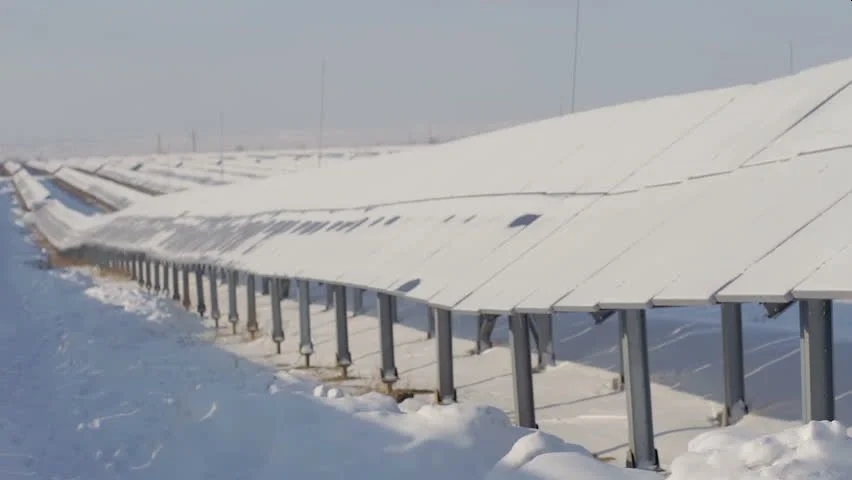
Germany’s ‘Green’ Energy Failure: Germany Turns Back To Coal And Natural Gas As Millions Of Its Solar Panels Are Blanketed In Snow And Ice | Tech News | Startups News - WorldNewsEra
Energiewende is a German word for ‘”energy transition.” Energiewende is a policy launched by the German government in 2000 to decarbonize its primary energy
worldnewsera.com
There's also Texas in the US where many (almost half) wind turbines froze and caused power outages and left people freezing.

 www.independent.co.uk
www.independent.co.uk

Why on earth would right-wing people with connections to the fossil fuel industry lie about ‘frozen wind turbines’ in Texas?
Disinformation has been circulating about the cold snap in Texas, fed by Republicans and publication ‘experts’ with convenient connections to gas and oil
Many jumped on defending the wind turbines, saying that it was not ONLY their fault, which is true, but the below articles are quite telling about how much our civilization is unprepared for facing the ice age.
No, frozen wind turbines aren’t the main culprit for Texas’ power outages
Erin Douglas and Ross Ramsey
Frozen wind turbines in Texas caused some conservative state politicians to declare Tuesday that the state was relying too much on renewable energy. But in reality, the lost wind power makes up only a fraction of the reduction in power-generating capacity that has brought outages to millions of Texans across the state during a major winter storm.
An official with the Electric Reliability Council of Texas said Tuesday afternoon that 16 gigawatts of renewable energy generation, mostly wind generation, were offline. Nearly double that, 30 gigawatts, had been lost from thermal sources, which includes gas, coal and nuclear energy.
“Texas is a gas state,” said Michael Webber, an energy resources professor at the University of Texas at Austin.
While Webber said all of Texas’ energy sources share blame for the power crisis, the natural gas industry is most notably producing significantly less power than normal.
“Gas is failing in the most spectacular fashion right now,” Webber said.
Dan Woodfin, a senior director at ERCOT, echoed that sentiment Tuesday.
“It appears that a lot of the generation that has gone offline today has been primarily due to issues on the natural gas system,” he said during a Tuesday call with reporters.
Still, some have focused their blame on wind power.
“This is what happens when you force the grid to rely in part on wind as a power source,” U.S. Rep. Dan Crenshaw, R-Houston, tweeted Tuesday afternoon. “When weather conditions get bad as they did this week, intermittent renewable energy like wind isn’t there when you need it.”
He went on to note the shutdown of a nuclear reactor in Bay City because of the cold and finally got to what energy experts say is the biggest culprit, writing, “Low Supply of Natural Gas: ERCOT planned on 67GW from natural gas/coal, but could only get 43GW of it online. We didn’t run out of natural gas, but we ran out of the ability to get natural gas. Pipelines in Texas don’t use cold insulation —so things were freezing.”
Agriculture Commissioner Sid Miller, known for his right-wing Facebook posts that have, in the past, spread misinformation and amplified conspiracy theories, also posted an unvarnished view of wind energy on Facebook: “We should never build another wind turbine in Texas."
In another post, Miller was even more forthright, but also misleading. “Insult added to injury: Those ugly wind turbines out there are among the main reasons we are experiencing electricity blackouts,” he wrote. “Isn’t that ironic? ... So much for the unsightly and unproductive, energy-robbing Obama Monuments. At least they show us where idiots live.”
While wind power skeptics claimed the week’s freeze means wind power can’t be relied upon, wind turbines — like natural gas plants — can be “winterized,” or modified to operate during very low temperatures. Experts say that many of Texas’ power generators have not made those investments necessary to prevent disruptions to equipment since the state does not regularly experience extreme winter storms.
It’s estimated that of the grid’s total winter capacity, about 80% of it, or 67 gigawatts, could be generated by natural gas, coal and some nuclear power. Only 7% of ERCOT’s forecasted winter capacity, or 6 gigawatts, was expected to come from various wind power sources across the state.
Production of natural gas in the state has plunged due to the freezing conditions, making it difficult for power plants to get the fuel necessary to run the plants. Natural gas power plants usually don’t have very much fuel storage on site, experts said. Instead, the plants rely on the constant flow of natural gas from pipelines that run across the state from areas like the oil and natural gas-producing Permian Basin in West Texas to major demand centers like Houston and Dallas.
Gov. Greg Abbott specified that fossil fuel sources were contributing to the problems with the grid when describing the situation Monday afternoon.
“The ability of some companies that generate the power has been frozen. This includes the natural gas & coal generators,” he wrote in a tweet.
Heather Zichal, CEO of the industry group the American Clean Power Association, said opponents of renewable energy were trying to distract from the failures elsewhere in the system and slow the “transition to a clean energy future.”
“It is disgraceful to see the longtime antagonists of clean power — who attack it whether it is raining, snowing or the sun is shining — engaging in a politically opportunistic charade, misleading Americans to promote an agenda that has nothing to do with restoring power to Texas communities,” she said.
Matthew Watkins contributed reporting.
Disclosure: Facebook and University of Texas at Austin have been financial supporters of The Texas Tribune, a nonprofit, nonpartisan news organization that is funded in part by donations from members, foundations and corporate sponsors. Financial supporters play no role in the Tribune's journalism. Find a complete list of them here.

No, frozen wind turbines aren’t the main culprit for Texas’ power outages - The Texas Tribune
Lost wind power was expected to be a fraction of winter generation. All sources — from natural gas, to nuclear, to coal, to solar — have struggled to generate power during the storm that has left millions of Texans in the dark.www.texastribune.org
Texas largely relies on natural gas for power. It wasn’t ready for the extreme cold.
Erin Douglas
Failures across Texas’ natural gas operations and supply chains due to extreme temperatures are the most significant cause of the power crisis that has left millions of Texans without heat and electricity during the winter storm sweeping the U.S.
From frozen natural gas wells to frozen wind turbines, all sources of power generation have faced difficulties during the winter storm. But Texans largely rely on natural gas for power and heat generation, especially during peak usage, experts said.
Officials for the Electric Reliability Council of Texas, which manages most of Texas’ grid, said the primary cause of the outages Tuesday appeared to be the state’s natural gas providers. Many are not designed to withstand such low temperatures on equipment or during production.
By some estimates, nearly half of the state’s natural gas production has screeched to a halt due to the extremely low temperatures, while freezing components at natural gas-fired power plants have forced some operators to shut down.
“Texas is a gas state,” said Michael Webber, an energy resources professor at the University of Texas at Austin. While he said all of Texas’ energy sources share blame for the power crisis — at least one nuclear power plant has partially shut down, most notably — the natural gas industry is producing significantly less power than normal.
“Gas is failing in the most spectacular fashion right now,” Webber said.
More than half of ERCOT’s winter generating capacity, largely powered by natural gas, was offline due to the storm, an estimated 45 gigawatts, according to Dan Woodfin, a senior director at ERCOT.
The outages during this storm far exceeded what ERCOT had predicted in November for an extreme winter event. The forecast for peak demand was 67 gigawatts; peak usage during the storm was more than 69 gigawatts Sunday.
It’s estimated that about 80% of the grid’s capacity, or 67 gigawatts, could be generated by natural gas, coal and some nuclear power. Only 7% of ERCOT’s forecasted winter capacity, or 6 gigawatts, was expected to come from various wind power sources across the state.
Woodfin said Tuesday that 16 gigawatts of renewable energy generation, mostly wind generation, are offline and that 30 gigawatts of thermal sources, which include gas, coal and nuclear energy, are offline.
“It appears that a lot of the generation that has gone offline today has been primarily due to issues on the natural gas system,” Woodfin said during a Tuesday call with reporters.
Production of natural gas in the state has plunged, making it difficult for power plants to get the fuel necessary to run the plants. Natural gas power plants usually don’t have very much fuel storage on site, experts said. Instead, the plants rely on the constant flow of natural gas from pipelines that run across the state from areas like the Permian Basin in West Texas to major demand centers like Houston and Dallas.
In early February, Texas operators were producing about 24 billion cubic feet per day, according to an estimate by S&P Global Platts. But on Monday, Texas production plummeted to a fraction of that: Operators in the state produced somewhere between 12 billion and 17 billion cubic feet per day.
The systems that get gas from the earth aren’t properly built for cold weather. Operators in West Texas’ Permian Basin, one of the most productive oil fields in the world, are particularly struggling to bring natural gas to the surface, analysts said, as cold weather and snow close wells or cause power outages that prevent pumping the fossil fuels from the ground.
“Gathering lines freeze, and the wells get so cold that they can’t produce,” said Parker Fawcett, a natural gas analyst for S&P Global Platts. “And pumps use electricity, so they’re not even able to lift that gas and liquid, because there’s no power to produce.”
Texas does not have as much storage capacity as other states, experts said, because the resource-laden state can easily pull it from the ground when it’s needed — usually.
Of the storage that the state does have, the resources are somewhat difficult to get to. Luke Jackson, another natural gas analyst for S&P Global Platts, said that physically withdrawing stored natural gas is slower than the immediate, ready supply of lines from production and is insufficient to make up for the dramatic declines in production.
Some power plants were already offline before the crisis began, adding to the problems, experts said. ERCOT anticipated 4 gigawatts of maintenance outages during the winter. Power plants in Texas usually do maintenance and updates to their plants during the typically mild winter months in preparation for the extreme electricity and power demand during the summer. That, too, is straining the grid’s supply.
Another winter problem: heating homes and hospitals by burning natural gas.
“In the summer, you don’t have as much direct burning of natural gas,” said Daniel Cohan, an associate professor of civil and environmental engineering at Rice University, pointing out that during peak usage in the summer months, the demand is all for electricity.
The last time the state experienced a major freeze like this was a decade ago, in 2011. At that time, too, natural gas generation experienced difficulties — had ERCOT not reduced load through the rolling blackouts implemented during that storm, it would have resulted in widespread blackouts throughout the entire region, a federal report on the storm warned.
It is possible to “winterize” natural gas power plants, natural gas production and wind turbines, experts said, which prevents such major interruptions in other states with more regular extreme winter weather. But even after upgrades were made after the 2011 winter storm, many Texas power generators have still not made all the investments necessary to prevent these sorts of disruptions happening to the equipment, experts said.
ERCOT directors also said that the storm this week took a turn in the early morning hours of Monday, when extremely low temperatures forced many more generators offline than ERCOT had anticipated.
“It appeared that the winterization we were doing was working, but this weather was more extreme than [past storms],” Woodfin said. “The loss of generation during the morning of Monday, after midnight, was really the part that made this a more extreme event than we had planned.”
Upgrading equipment to withstand extremely low temperatures and other changes, such as providing incentives for customers to conserve power or upgrade to smart appliances, could help avoid disasters like this one, said Le Xie, a professor of electrical and computer engineering at Texas A&M University and assistant director of energy digitization at A&M’s Energy Institute.
“We used to not worry too much about such extreme cold weather in places like Texas, but we probably need to get ready for more in the future,” Xie said. With climate change, he said, “We’re going to have more extreme weather conditions throughout the country.”
Jolie McCullough contributed reporting.
Disclosure: Rice University, Texas A&M University and the University of Texas at Austin have been financial supporters of The Texas Tribune, a nonprofit, nonpartisan news organization that is funded in part by donations from members, foundations and corporate sponsors. Financial supporters play no role in the Tribune's journalism. Find a complete list of them here.

Texas power outage: Why natural gas went down during the winter storm
Texas largely relies on natural gas — especially during times of high demand — to power the state. Experts say natural gas infrastructure, from pumping it out of the ground to the plants in city centers, was unprepared for the plunging temperatures brought by the winter storm.www.texastribune.org
XPan
The Living Force

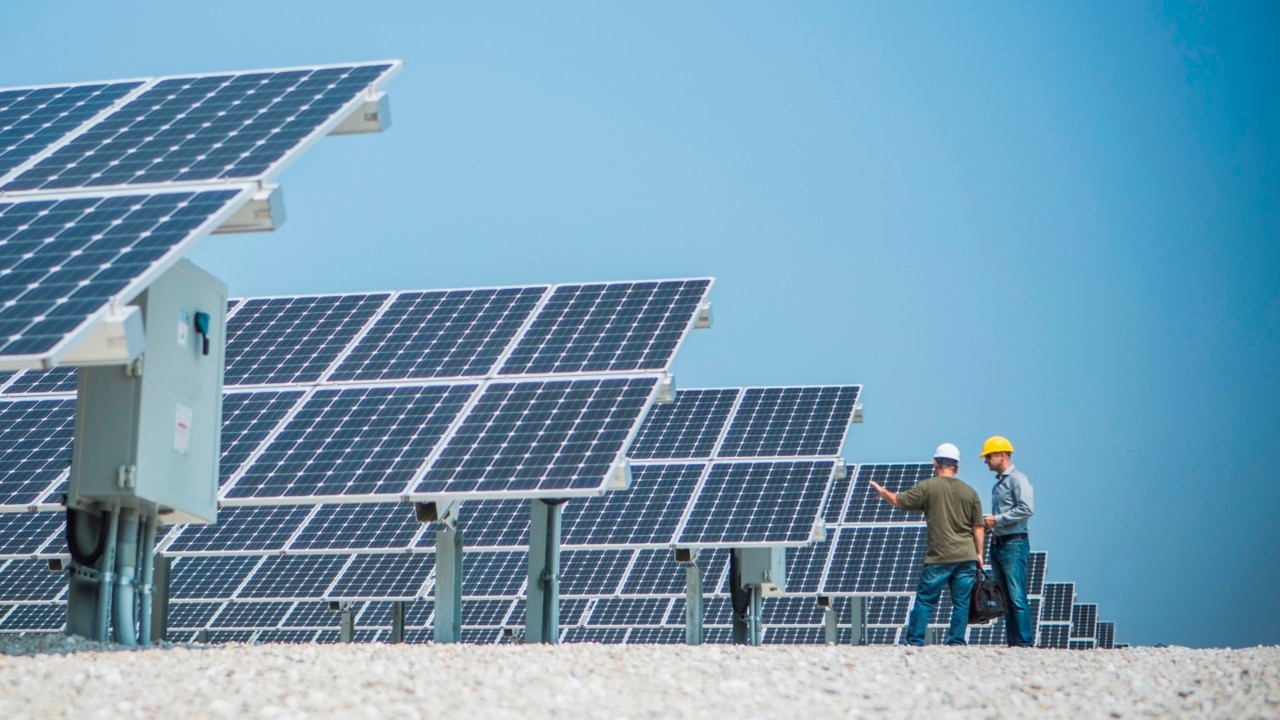
Germany forced to rely on non-renewable energy after cold snap froze renewables
Sky News host Cory Bernardi says Germany “should be thankful” for non-renewable energy after forced reliance on surrounding countries’ power after a cold snap froze solar panels and wind turbines.www.skynews.com.au
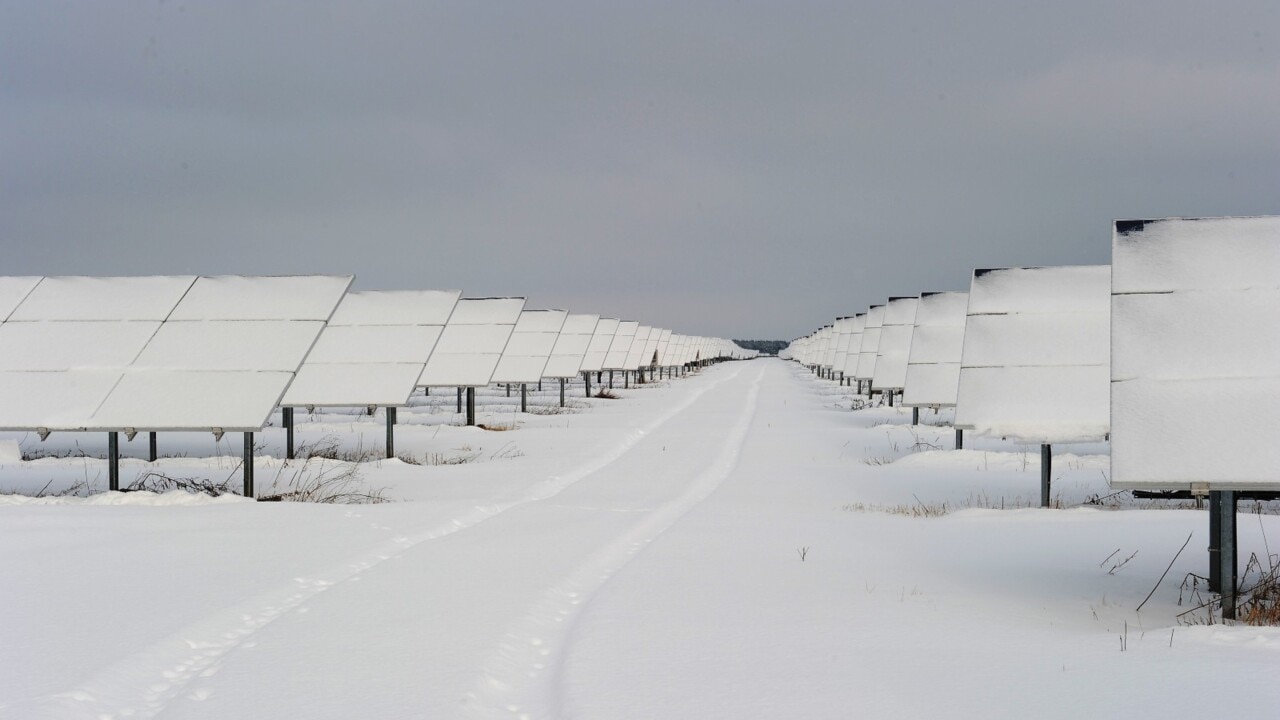
World’s ‘solar and wind capital’ freezing due to snow ‘blanketing millions’ of solar panels
Germany is held up as the world’s solar and wind capital by “renewables luvvies” but Germans are freezing through winter due to “millions of solar panels blanketed in snow” and turbines sitting idle, according to Rowan Dean.www.skynews.com.au

Germany’s ‘Green’ Energy Failure: Germany Turns Back To Coal And Natural Gas As Millions Of Its Solar Panels Are Blanketed In Snow And Ice | Tech News | Startups News - WorldNewsEra
Energiewende is a German word for ‘”energy transition.” Energiewende is a policy launched by the German government in 2000 to decarbonize its primary energyworldnewsera.com
Helicopters to the wind turbine rescue
In case it has not been mentioned earlier (?) I do not know - but I heard yesterday, via german Nuoviso.tv during their 95th session called “Home Office” that the frozen wind turbines in Germany lately - especially near the Baltic Sea in the north - require that expensive helicopers have to pour antifreeze solvents onto them, in order to get them working (?) again. There is a pool of 100 helicopters for that very purpose.
The tale of green energy, saving CO2, saving the climate and so on - is such a joke ... at so many levels.

It just hits me... I wonder, how the wind turbines are handled during winter in Sweden ?! I have absolutely no clue...

